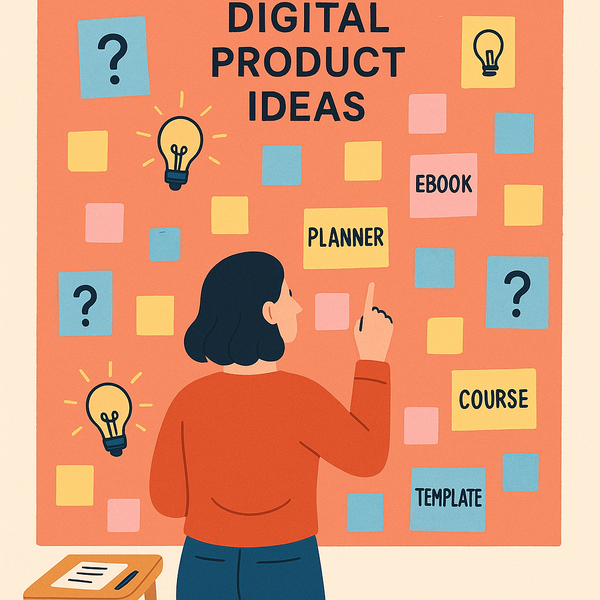Affiliate Marketing Blog Beginner's Guide

In 2025, affiliate marketing remains one of the smartest ways to build long-term passive income online — and thanks to AI tools, launching a blog has never been faster or more accessible.
If you've been thinking about starting your own affiliate marketing blog but don't know where to begin, this step-by-step guide will walk you through everything you need to know to launch, grow, and monetize your site in today’s fast-moving online world.
Let's get the gears turning!
Step 1: Pick a Profitable Niche
The first step is choosing a niche where people actively search for product recommendations and solutions.
You want to find a sweet spot: not too broad (like "health") but not too narrow (like "yoga mats for cats").
Hot niches in 2025 include:
- AI tools and software
- Health tech (wearables, biohacking)
- Remote work gear
- Sustainable lifestyle products
- Pet gadgets
- Outdoor survival gear
- Micro-SaaS and no-code solutions
Pro tip: Focus on niches with high buyer intent — people looking for "best," "reviews," or "comparisons" are ready to purchase.
Step 2: Set Up Your Blog Platform
You don't need a tech degree to get started — just a few simple tools:
| Tool/Service | Recommendation |
|---|---|
| Domain | Namecheap, Porkbun |
| Hosting | Rocket.net or Cloudways |
| CMS | WordPress (standard) or Ghost (lean and fast) |
| Theme | KadenceWP, GeneratePress, or Astra |
Install essential plugins like RankMath SEO or Yoast, and set up basic pages like your Privacy Policy and Affiliate Disclosure to stay compliant.
Step 3: Build a Clean Site Structure
Design your site to make it easy for readers — and search engines — to find your best content.
Start with:
- A simple Home Page
- A Blog Section where all your articles live
- Key post types:
- "Best [product]" roundups
- "[Product A] vs [Product B]" comparisons
- How-to guides that naturally recommend products
Tip: Build "pillar posts" — deep, detailed guides that can serve as hubs for related articles.
Step 4: Create High-Intent Content (Using AI + Human Touch)
AI tools like ChatGPT or Claude can help you brainstorm, outline, and draft blog posts — but real trust comes from your insights, opinions, and personal touches.
Your content should:
- Be easily scannable (headings, bullets, bold key points)
- Focus on buyer intent keywords (e.g., "best AI scheduling tools for freelancers")
- Include real experiences, reviews, or product use cases
Content types that convert best:
- Product roundups
- Product comparisons
- Tutorial/how-to guides featuring affiliate products
Step 5: Join Affiliate Programs
Once your content starts coming together, it’s time to monetize.
Top affiliate networks in 2025:
- Amazon Associates (for physical products)
- PartnerStack and Impact (for SaaS tools)
- ShareASale and CJ Affiliate (for niche goods)
Pro tip: Mix big programs with smaller SaaS offers — SaaS often pays recurring commissions!
Step 6: Drive Traffic
Traffic is the fuel for your blog’s growth — and free, organic traffic is the best place to start.
Primary traffic sources:
- SEO (using keyword tools like Ahrefs or SurferSEO)
- Pinterest (amazing for visual or lifestyle niches)
- YouTube Shorts / TikTok (quick product demos, link back to your blog)
- Email list building (optional early, crucial later)
Key: Focus on 1–2 channels at first and master them.
Step 7: Track, Tweak, and Scale
Once you get traction:
- Use Google Analytics 4 and Search Console to see what’s working
- Track affiliate link clicks with tools like ThirstyAffiliates or PrettyLinks
- Expand on winning topics
- Optimize or kill underperforming content
As you scale, you can also:
- Launch small paid ads
- Add digital products like mini-courses or templates
- Build tiny topical authority websites around spin-off ideas
What to Expect (Realistic Timeline)
| Time Frame | Focus |
|---|---|
| Months 1-2 | Set up your blog, publish 10+ posts |
| Months 3-6 | Publish 2 articles/week, basic SEO |
| Months 6-9 | 1–3 affiliate sales per month |
| Months 9-12 | 5–15 affiliate sales per month, build email list |
Potential:
$500–$2,000/month by month 12 with consistency
$5,000+/month possible once you build momentum and scale smart
Final Thoughts
Affiliate marketing blogs are one of the few time-leveraged businesses left where you can:
- Start with very low upfront costs
- Scale passively through SEO and automation
- Own your audience and platform
- Leverage AI to move 5x faster than a traditional blogger could
But success requires consistency, patience, and a smart workflow where AI supports your creativity, not replaces it.




